3DPrint.com | The Voice of 3D Printing / Additive Manufacturing |
- Ford Uses 3D Printing to Restore Michigan Central Station
- New Biocompatible 3D Printing Resins Released by Formlabs
- Wind Turbine Giant Manages Supply Chain Markforged 3D Printing
- Siemens Advanta to Optimize Morf3D’s Long Beach 3D Printing Facility
- Binder Jet 3D Printing a New Nuclear Future with Silicon Carbide
| Ford Uses 3D Printing to Restore Michigan Central Station Posted: 12 Apr 2022 06:30 AM PDT Whereas concrete 3D printing is making all of the headlines, there are more uses for 3D printing in construction that are underexposed. One that has vexed me for a few years is the uses of 3D printing in restoration. I’ve heard of a number of projects where 3D printing has been used to restore buildings, details, windowsills and much more. Usually, such projects avoid the limelight. Now, Ford is showcasing an additive restoration project that will hopefully inspire others. The team is working on renovating Michigan Central Station for the “Michigan Central mobility innovation district.” The 100-year-old former train depot is in the painstaking process of being rehabilitated to serve as a hub for entrepreneurs, startups, and Ford's mobility team to create urban transportation solutions.
Previously, the company has used additive to make a steam injector for its Henry Ford Museum of American Innovation and other parts to restore the Fairlane Estate. For the Michigan Central project, the team had to restore some highly detailed window elements and tiles. Remaining tiles and other existing elements were 3D scanned before the CAD files were cleaned up and repaired. In some cases, the team used different scans of different examples of the same tile to reconstruct a whole piece. These were then 3D printed at Ford's Advanced Manufacturing Center in Redford Township.
In total, the team 3D printed hundreds of components including 550 parts for flower rosettes. The 3D scanning took months, while the 3D printing took three weeks.
You may now think that this is just a small, cute project for the automotive giant. However, this is an application with huge potential across many countries. Many buildings have original architectural details that restorers, construction firms, governments, and developers want to maintain. Often, these are made from wrought iron or plastered by hand. Sometimes, this is done with such skill that we’d be hard pressed to replicate. Other times, it has been done in such a time-consuming way that it would be cost prohibitive to replicate. Sometimes, we simply cannot understand the artisanship involved and cannot copy these pieces. In turn, 3D printing and 3D scanning may be the only way to cost-effectively replicate these details. And this is being done in a limited way the world over, but they’re not necessarily talking about it. This is a market and a need that is quite simply unmet by industry. Look at this project and how immense it is and then think that a few hundred 3D prints could replicate these unique details. A lot of them could be made on rather quotidian SLA and FDM 3D printers and then painted, resulting in a very low cost per part. The scanning here is the real stickler. In this case, months of continuous scanning would have probably doomed this project from the start. But, in many cases, 3D printing plus scanning is a low-cost, cost effective and very fast solution to building restoration. With architectural details specifically, the business case is very good because parts are relatively small. Even 3D printing even much bigger elements could cheap with stunning results. This includes gargoyles, architectural sculpture, bas reliefs, façade elements, monumental wood parts, statues. (non-load bearing) arches, hand rails, railings, grilles, plaster work and more. Because parts will be painted over, a lot of the issues with rough surfaces are non existent. And costs melt away in the face of labor hours to do the same thing some other way. This is a potentially very exciting area for 3D printing that is sadly unexplored and not discussed enough. The post Ford Uses 3D Printing to Restore Michigan Central Station appeared first on 3DPrint.com | The Voice of 3D Printing / Additive Manufacturing. |
| New Biocompatible 3D Printing Resins Released by Formlabs Posted: 12 Apr 2022 06:00 AM PDT Formlabs now has BioMed White Resin and BioMed Black Resin for its SLA printers. The two new materials are biocompatible and are squarely aimed at the surgical planning and medical device market. These resins complement existing resins such as BioMed Clear and BioMed Amber and are USP Class VI certified. This means that they have been found not to have long-lasting effects on the body in terms of toxicity, skin reactions, and short-term use in and around the body.  Formlabs BioMed White is used for printing healthcare models. Image courtesy of Formlabs. Commenting on the resins, Formlabs Director, Medical Market Development, Gaurav Manchanda, said:
Resins have always been problematic. First, many 3D printing resins are skin irritants or have photoinitiators in them that irritate the skin. Some resins cause long-term contact allergies and may be much more harmful if the part is touched in its liquid state. Finally, some resins are very toxic indeed. So this is a hopeful development but also a commercially interesting one. It used to be that any company that developed a biocompatible resin would have a high chance of being acquired by 3D Systems. Now Formlabs is heating the competition in SLA by going industry-specific and upmarket. Its Pro printers are already used by a lot of designers to do things like making jewelry castings. But, the company also has an expanding dental printer and resin portfolio. This in and of itself carters to a vast market. We are reaching a tipping point where a great many dentists and dental labs are thinking of going digital and buying 3D printers, obtaining integrated software-material-printer solutions, or working with services. Of all the markets we serve, thinking about 3D printing is the most advanced in the everyday practitioner in dental. Dentists, dental labs, and orthodontists are all thinking about going digital. Millions of molds, temporary inserts, and metal bridges have been made to date. 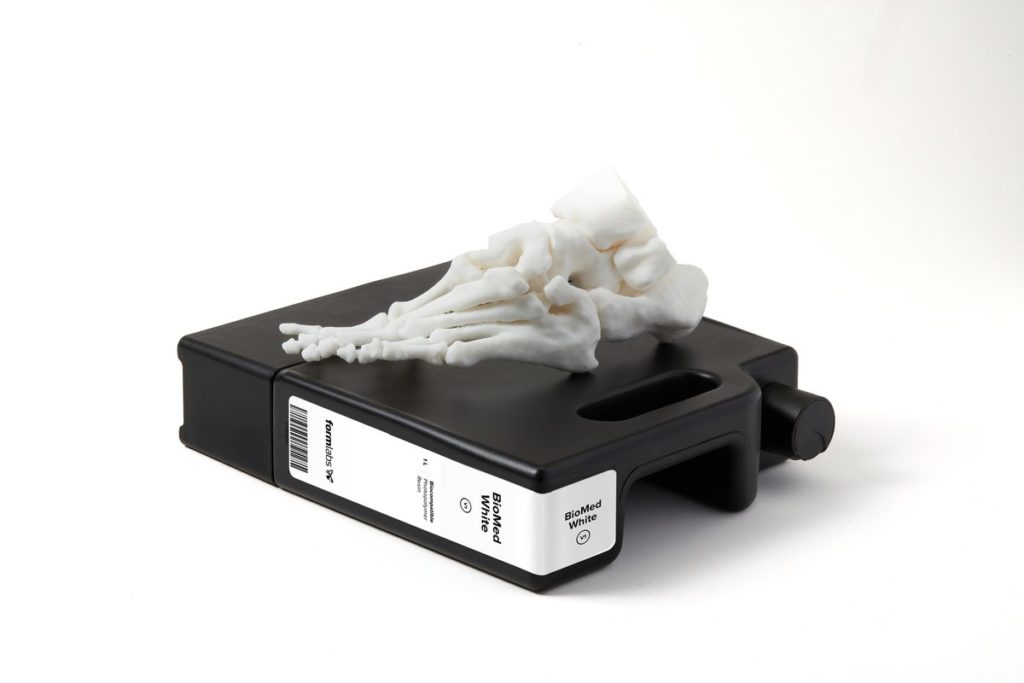 Formlabs BioMed White is used for printing healthcare models. Image courtesy of Formlabs. The offerings for dental are expanding, with companies such as 3D3 and Sprintray developing whole portfolios of dental solutions to compete with EnvisionTEC, Asiga, and DWS. Your doctor, on the other hand, is blissfully unaware of 3D printing. We’ve seen 3D printing labs in hospitals grow from a handful to over 150 worldwide over the last few years. But, there are currently no complete offerings for them to integrate all the necessary software, materials, and printers. Apart from 3D Systems’ Kumovis, there are precious few printers designed with your doctor or hospital in mind. If we just look at things like surgical guides and models for surgical planning, the market is considerable and expanding. But no one is really tackling it. Formlabs has always had a very top-down controlled vision of its 3D printers, materials, and peripherals. An Apple style focus on excellence and control meant that the company has a path for its users which is restrictive and well laid out. This means that Formlabs 3D printers are still the easiest to use today. But, the insane growth in materials and players that we’ve seen in the chaotic and open material extrusion market is absent in SLA. Only now do we find newer SLA printer companies emerging at scale. Due to its closed but well-working ecosystem, Formlabs can parley its current offerings relatively easily to industry-specific solutions. It seems that as it has done in dental, it now wants to expand into more healthcare applications. It already has the $12,000 3BL, which can be great for dental and medical, specifically the Form B+ for dental. These machines could be used much more widely in hospitals and doctors’ offices than they are today. Due to safety concerns, most hospitals currently use Material Extrusion 3D printers. But, highly accurate SLA prints would be excellent for surgical planning models and medical models for students and doctors to learn from. Indeed one could make very precise and relatively cheap rare pathology-specific medical models quite easily with the existing Formlabs printers. With these new resin materials, Formlabs is betting on this market growth. And it also wishes to perhaps open a market in medical device prototyping and possibly in implantable surgical guides in the long run. So this would be a very high-value thing for them to do. The post New Biocompatible 3D Printing Resins Released by Formlabs appeared first on 3DPrint.com | The Voice of 3D Printing / Additive Manufacturing. |
| Wind Turbine Giant Manages Supply Chain Markforged 3D Printing Posted: 12 Apr 2022 05:30 AM PDT New wind power installations in the U.S. decreased in 2021 as compared to 2020: nevertheless, the U.S. is still aiming for 20% of its electricity to be wind-powered by 2030. Meanwhile, China set a record for increased wind capacity in 2021. In fact, China's wind power installations grew last year by an amount greater than the number of such installations achieved by any other country in the last five years. In the European market, the conflict in Ukraine has strongly reinforced the collective desire to transition away from fossil fuels. Of course, this has done little to curb the E.U.'s short-term demand for oil and gas. However, internationally, the long-term picture still signals an ever-growing need across the continent (and around the globe) for significantly boosting the supply of all components involved in wind-generated electricity. And the world's largest producer of wind turbines — the Danish firm Vestas — is using additive manufacturing (AM) to address the supply shortages that have plagued the wind industry since the beginning of the pandemic. As it manages operations that span the entire planet (including over fifteen manufacturing plants), Vestas has seen firsthand how the last two years of supply chain disruptions can affect a business. Fortunately, in 2021, Vestas rolled out its direct digital manufacturing (DDM) program, powered by its utilization of a variety of Markforged products: the X7 and Onyx One 3D printers, the Eiger cloud-based digital repository, and the Blacksmith software system — collectively, referred to by Markforged as The Digital Forge platform. 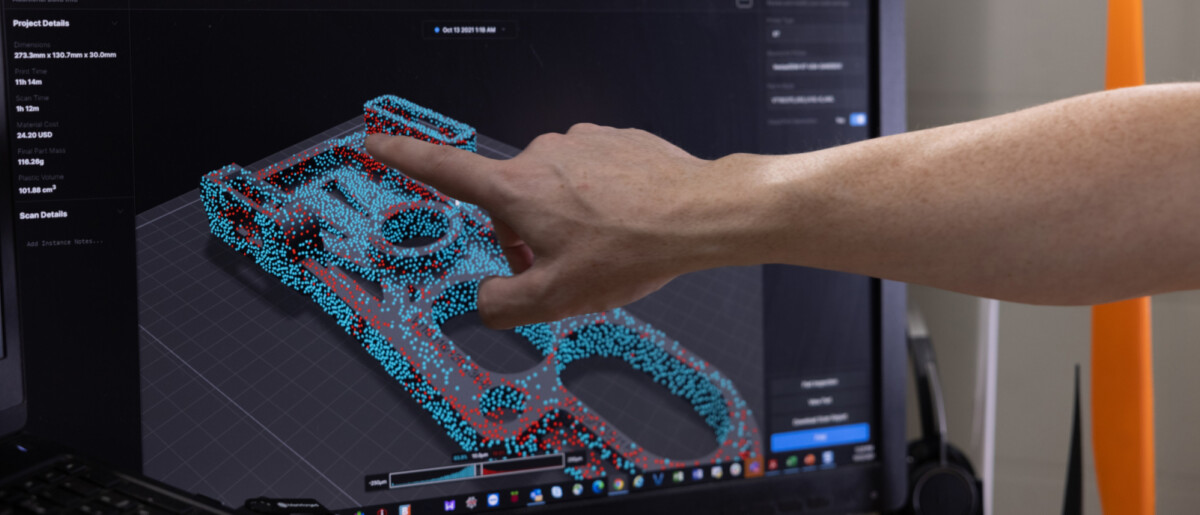 Blacksmith digital part inspection verifies printed accuracy of the TC marking tool. Vestas provides an ideal example of what it looks like, and what it means, to implement a digital supply chain for the renewable energy and additive manufacturing (AM) sectors alike. As Vestas' principal engineer for AM and advanced concepts, Jeremy Haight, puts it, "Our approach is end-to-end. We provide the physical article in near real-time to a variety of places. It's the closest thing to teleportation I think you can get." 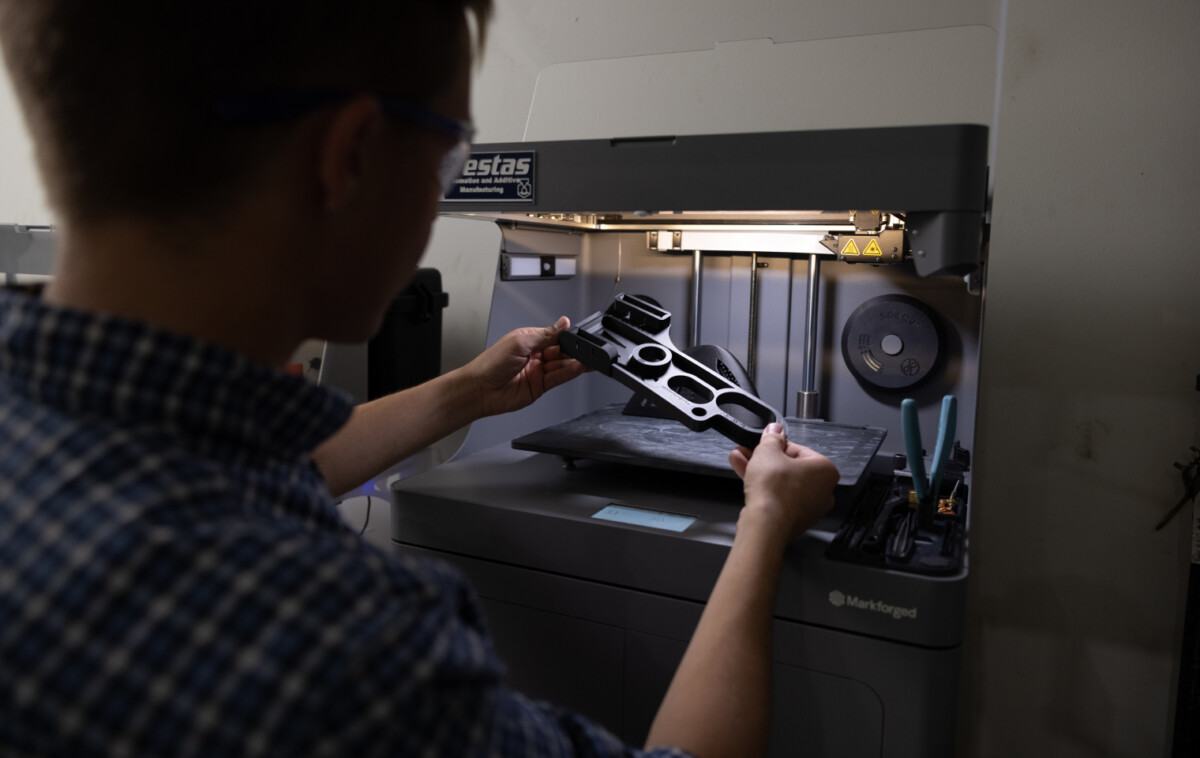 Vestas TC marking tool used to mark the root end of turbine blades to align pitch during installation. Although Vestas has already stored over 2000 parts in the Eiger digital repository, two components that the company has highlighted as particular DDM success stories include top center (TC) marking tools, and lightning tip receptors. TC marking tools are used to make sure that turbine blades' root ends are properly aligned. Using traditional manufacturing methods, these tools were originally made from metal only, and took up to five weeks to produce. Now, since Vestas is able to print the TC marking tools on-site, using Markforged's nylon-based Onyx material, the production process only takes a few days, there's no shipping time to take into consideration, and the end-result is 85% lighter. 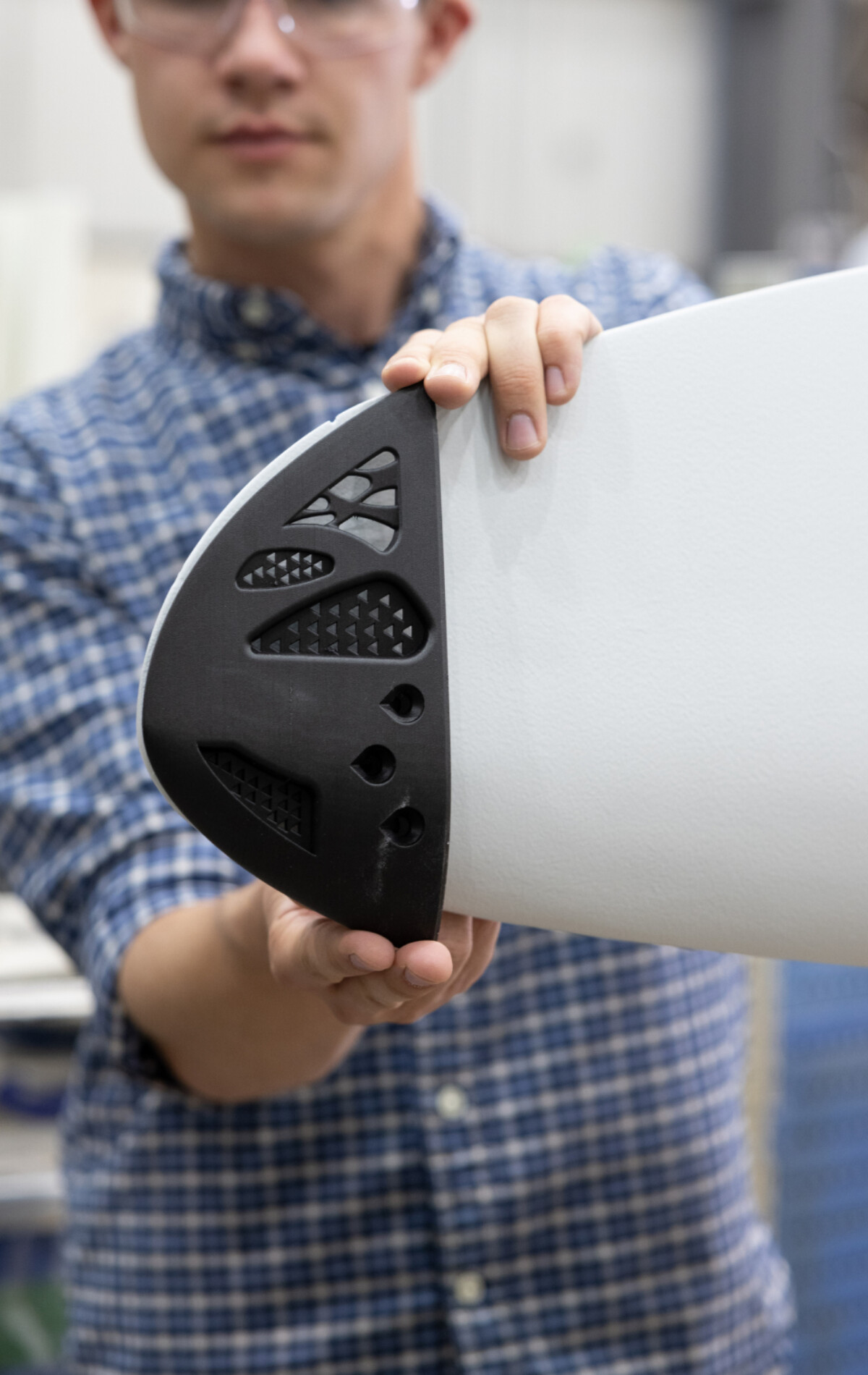 Composite prototype of lightning tip receptor for wind turbine blades to reduce lightning strike damage. Conventional methods for producing lightning tip receptors, which are used to reduce the damage to wind turbines caused by lightning, take at least 12 weeks. Moreover, traditionally manufactured lightning tip receptors are made from aluminum — the material affected by supply chain issues perhaps more so than any other in the last two years. The same component produced using AM, on the other hand, is made from copper, and can be finished in just two days. And again, as with the TC marking tools, one of the greatest advantages of using AM is the ability to produce the lightning tip receptors exactly where they're needed. To sum up, Vestas is an instructive example for any other company looking to use AM to create a digital supply chain for two main reasons. For one thing, it's the leading manufacturer in one of the industries most detrimentally affected in the short-term by pandemic-related supply chain issues. For another, it's in an industry that, equally, can help positively affect global supply chain issues in the long run, simply by aiding in humanity's (very) gradual transition away from total dependence on fossil fuels. Images courtesy of Markforged and Vestas The post Wind Turbine Giant Manages Supply Chain Markforged 3D Printing appeared first on 3DPrint.com | The Voice of 3D Printing / Additive Manufacturing. |
| Siemens Advanta to Optimize Morf3D’s Long Beach 3D Printing Facility Posted: 12 Apr 2022 05:00 AM PDT Morf3D continues to push towards a digital future that is fully integrated and automated. The El Segundo-based company, best known for creating aerospace components via additive manufacturing, continues to add fresh layers to its new headquarters, the Applied Digital Manufacturing Center (ADMC) in Long Beach, California. In the last year, the company has partnered with pioneering 3D printing companies like SLM Solutions and EOS to equip the facility and help drive the industrialization of digital manufacturing in high-growth markets. According to the latest announcement, Morf3D has partnered with Siemens Advanta, the IoT consultancy and solutions integration arm of the global technology powerhouse, to develop a scale-up plan and bottleneck analysis, as well as explore novel manufacturing and logistic concepts for the Long Beach center. The two entities have committed to an ongoing technology development partnership as Morf3D continues to build its new Applied Digital Manufacturing Center in Long Beach. There, the two partners will validate material flow and space demand based on a digital twin in production, an enhanced computer model that acts as a digital representation and uses inputs from a real-world component.
Creating value for AMMorf3D's ADMC is a new 90,000 square foot state-of-the-art facility that harnesses applied research, advanced engineering and application development, serial production, and most significantly, new industry partnerships with global leaders to drive the industrialization of digital manufacturing in high-growth markets. As part of Siemens Advanta's inaugural project, the consultancy will leverage advanced design and simulation software from Siemens Digital Industries. Furthermore, Siemens Advanta's work at the new ADMC will transition into additional ongoing software innovations and on-site personnel support.
The company claims its investment in the new California facility underscores its commitment to developing a strong industrial base that improves the quality of its products, enhances technical capabilities, and enriches customer applications worldwide. The center is projected to be one of the largest aerospace 3D printing solution integrators in the US. Even more so, at its peak, the center will be home to 150 multi-discipline engineers, research staff, and technical teams. Since being founded in 2015, the startup has supplied highly complex 3D printed customized parts for flight to aerospace, defense, and space companies. Many of its products have landed on the Moon, orbited Earth, and helped strengthen applications for customers. This is because Morf3D serves the world's largest aerospace original equipment manufacturers (OEMs), including Honeywell, Northrop Grumman, and Collins Aerospace. Notably, the startup has maintained a close relationship with one of its main clients, Boeing, producing 3D printed titanium and aluminum components for its satellites and helicopters. The commercial jetliner manufacturer even funded Morf3D on two occasions, once in April 2018 and again in August 2019, through its venture capital arm, HorizonX Ventures, which identifies late seed through mid-growth stage startup opportunities for investment. At the new location, Morf3D will be close to some major players in the up-and-coming space industry, like Virgin Orbit and Relativity Space. This closeness could help set the stage to dramatically enhance industry collaboration to further advance and accelerate AM production in the space industry. In a social media post, Madera pointed out that the ADMC will "bring forth the worlds leading technology companies under one roof to create a fully integrated closed-loop production system. These developments will radically shape how we ultimately industrialize and scale AM (…) This isn't about more capacity or capability, the ADMC's mission is to solve the problem by addressing the entire value chain." One of the company's main goals has been to create, build, and optimize its additive manufacturing facility, and so far, it has been doing just that. Eventually, the digital planning for the Long Beach factory will evolve into an ongoing technology development partnership between Morf3D and Siemens Advanta, suggest the two. Notably, they plan to help customers unlock their digital futures by offering end-to-end support for the creation of unique parts. The post Siemens Advanta to Optimize Morf3D’s Long Beach 3D Printing Facility appeared first on 3DPrint.com | The Voice of 3D Printing / Additive Manufacturing. |
| Binder Jet 3D Printing a New Nuclear Future with Silicon Carbide Posted: 12 Apr 2022 04:30 AM PDT Renewable energy sources such as solar and wind will, and should, continue to grow, but conventional wisdom in energy circles identifies nuclear power as one of the most reliable, portable, and green baseload energy sources to support a comprehensive modern energy grid. The negative perception of high-profile accidents such as Three Mile Island and Fukushima highlight outdated nuclear technology when advanced materials and their methods of manufacture weren't available. Organizations like Ultra Safe Nuclear Corporation (USNC) use advanced manufacturing to make safe, controlled, and reliable nuclear energy a reality. Binder jet 3D printing plays a fundamental role in USNC's innovative fuel design that allows the company to control nuclear fission and prevent accidents altogether. The key to their approach is Fully Ceramic Micro-encapsulated (FCM) fuel, the manufacturing of which is enabled by Desktop Metal innovative X-Series binder jet systems and their ability to 3D print heat-resistant ceramic particles in unique geometries that can safely surround a standard type of nuclear fuel particle known for its safety. Today, USNC is using the novel approach to fuel its extremely reliable and safe micro modular reactor (MMR Traditionally, nuclear fuel microspheres are put into a soft graphitic matrix. However, these were not structurally strong and served as a poor barrier to radionuclide release. USNC's answer was to replace this graphitic matrix with a refractory ceramic: silicon carbide (SiC). SiC is a technical ceramic material with extreme environmental stability that is often used in aerospace, armor, plasma shield, and high-temperature applications. The conditions within a nuclear reactor are some of the harshest in all of industry, yet SiC doesn't shrink or excessively swell like the traditional graphitic matrix and has a very high resistance to oxidation and corrosion, offering unique stability under all the demanding conditions of the nuclear reactor core.
The 3D printed SiC fuel forms may have complex geometries that act as shells for the nuclear fuel particles. Silicon carbide will often be infiltrated with silicon or other matrices for densification; however, this is not an option in a nuclear environment. "Radiation will affect one material one way and another differently, so material uniformity and homogeneity is key," Terrani said. By marrying binder jetting with chemical vapor infiltration to fill the porous SiC structure with more high-purity crystalline silicon carbide, USNC is able to realize highly complex, near-net shapes without the need to sinter the SiC material, apply any pressure, or introduce secondary phases.
Binder jet 3D printing directly from digital design files without the need for tooling allows the USNC team to iterate their designs quickly and create unique shapes not otherwise manufacturable. Beyond performance, the ability to create unique designs en masse with 3D printing allows USNC to add an additional layer of quality assurance to its mission of safe, responsible nuclear energy.
Download the complete case study to learn how USNC 3D prints technical ceramics to create safe nuclear fuel cells with Desktop Metal X-Series binder jet machines: The post Binder Jet 3D Printing a New Nuclear Future with Silicon Carbide appeared first on 3DPrint.com | The Voice of 3D Printing / Additive Manufacturing. |
| You are subscribed to email updates from 3DPrint.com | The Voice of 3D Printing / Additive Manufacturing. To stop receiving these emails, you may unsubscribe now. | Email delivery powered by Google |
| Google, 1600 Amphitheatre Parkway, Mountain View, CA 94043, United States | |
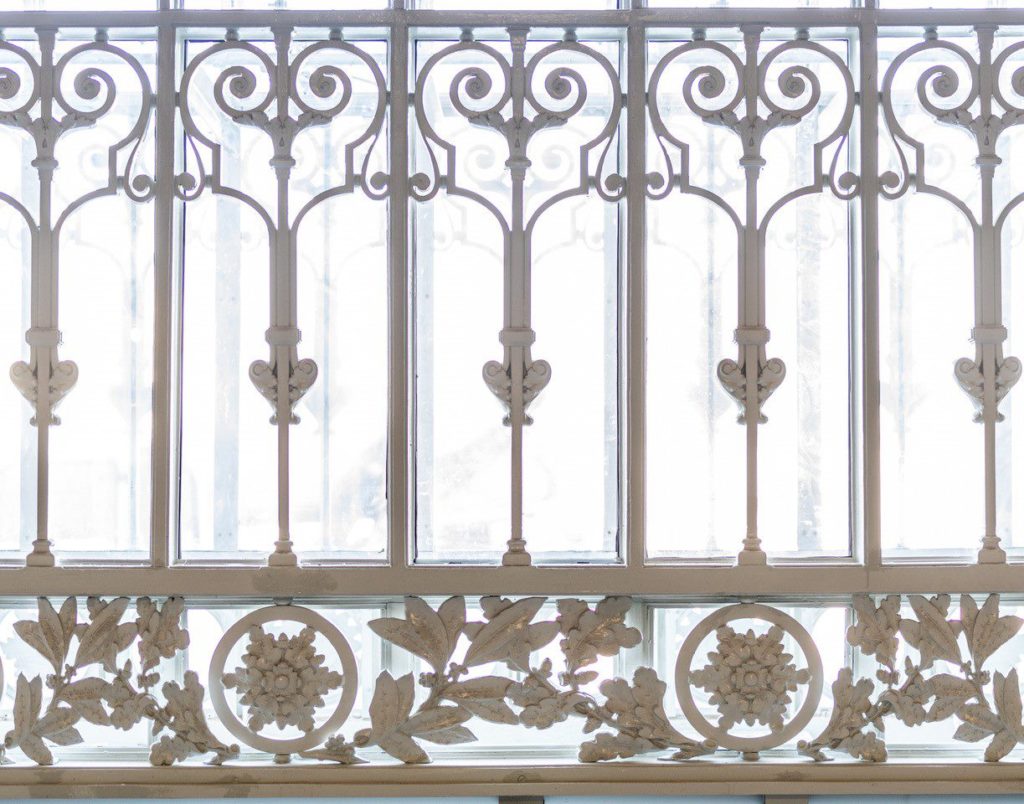
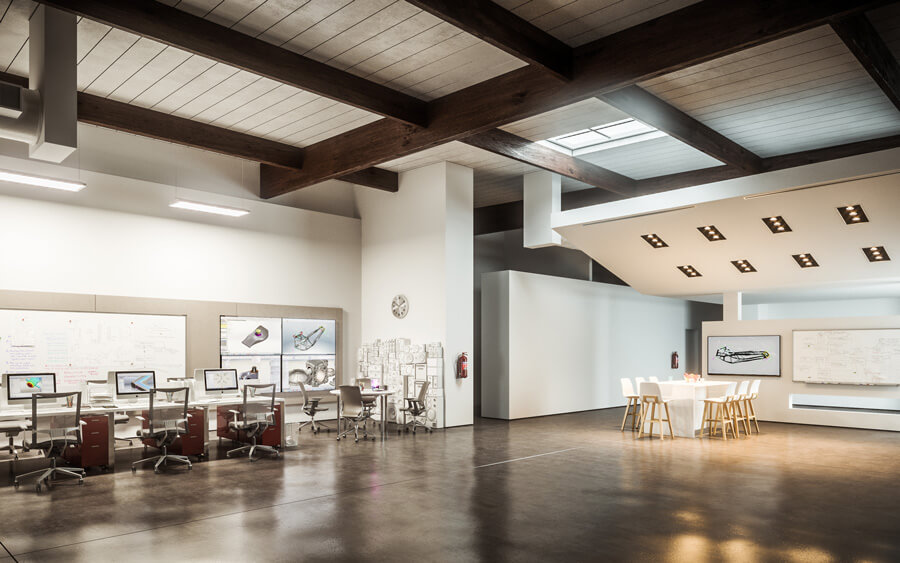
 ) energy systems. Application of
) energy systems. Application of 

0 comments:
Post a Comment